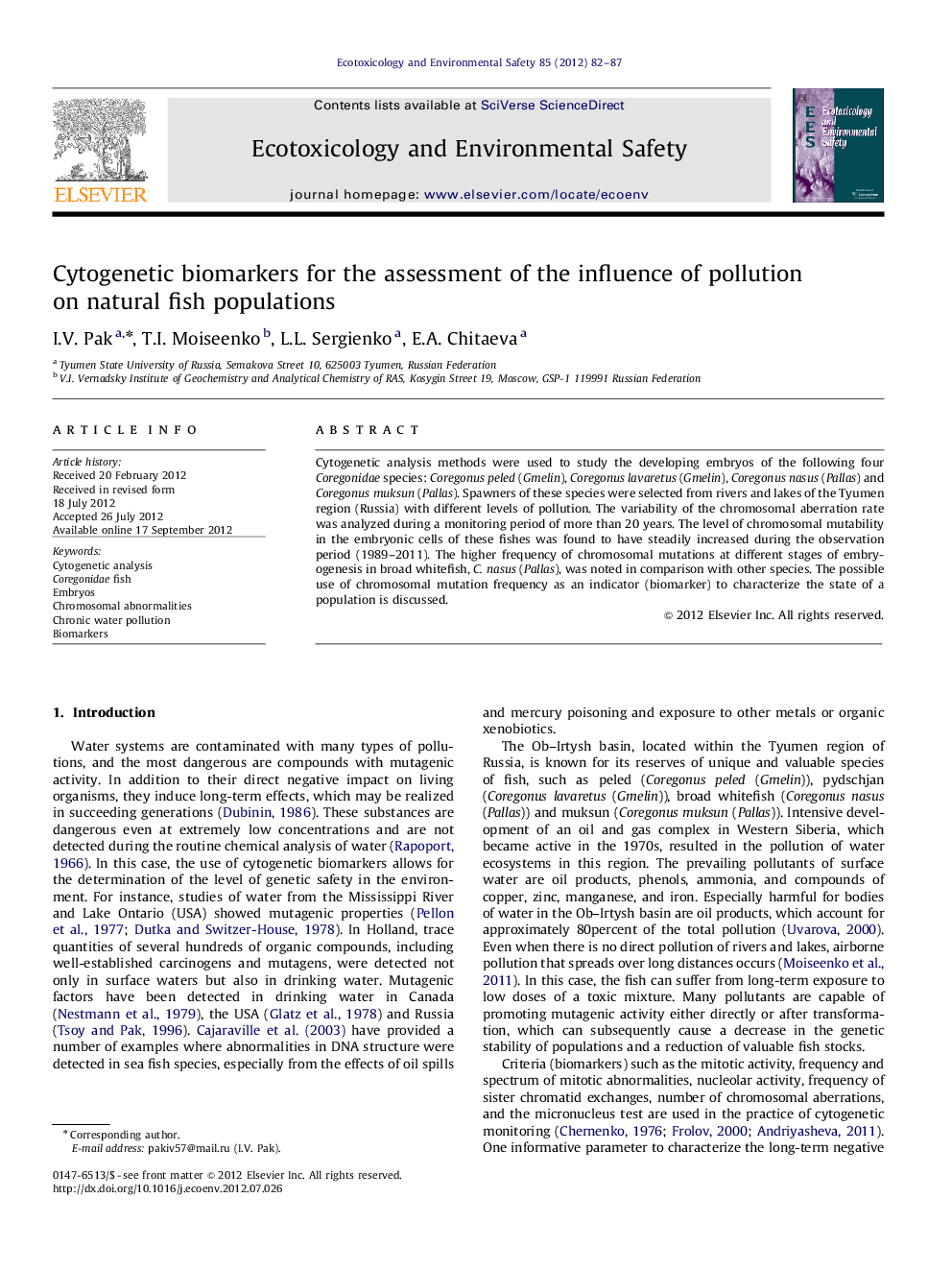| Article ID | Journal | Published Year | Pages | File Type |
|---|---|---|---|---|
| 4420808 | Ecotoxicology and Environmental Safety | 2012 | 6 Pages |
Cytogenetic analysis methods were used to study the developing embryos of the following four Coregonidae species: Coregonus peled (Gmelin), Coregonus lavaretus (Gmelin), Coregonus nasus (Pallas) and Coregonus muksun (Pallas). Spawners of these species were selected from rivers and lakes of the Tyumen region (Russia) with different levels of pollution. The variability of the chromosomal aberration rate was analyzed during a monitoring period of more than 20 years. The level of chromosomal mutability in the embryonic cells of these fishes was found to have steadily increased during the observation period (1989–2011). The higher frequency of chromosomal mutations at different stages of embryogenesis in broad whitefish, C. nasus (Pallas), was noted in comparison with other species. The possible use of chromosomal mutation frequency as an indicator (biomarker) to characterize the state of a population is discussed.
► Level of chromosomal abnormalities in Coregonidae of Ob–Irtysh basin is determined. ► Natural populations of the river and lake ecosystems were studied. ► Data of the 22-year biomonitoring period is provided. ► Possible use of chromosomal aberration frequency as a biomarker of population's state.
